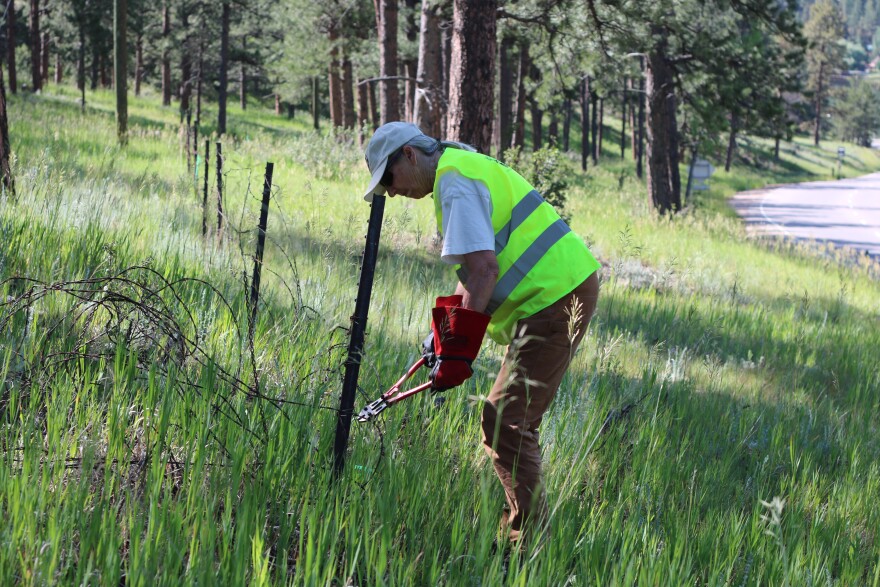Clippers in hand, volunteers snap the metal lines of an old fence, its strands drooping and thorns rusted. Once they sever the wire from the posts, they coil it up and cart it away.
These are the Barbed Wire Warriors. On this early summer day, they’re tearing down a fence along a busy highway. Patty Brown, the Warriors’ crew leader, guessed it had been there for more than 50 years.
“Most of it's old. It's not useful and not functioning, and it's actually very dangerous,” said Brown. “We go out, we get permission from the homeowners or the landowners, and we remove it.”
The Barbed Wire Warriors is an initiative of Wild Aware, a grassroots group based in Evergreen, Colo., that formed six years ago to reduce collisions between animals and cars in the foothills of the Rocky Mountains.
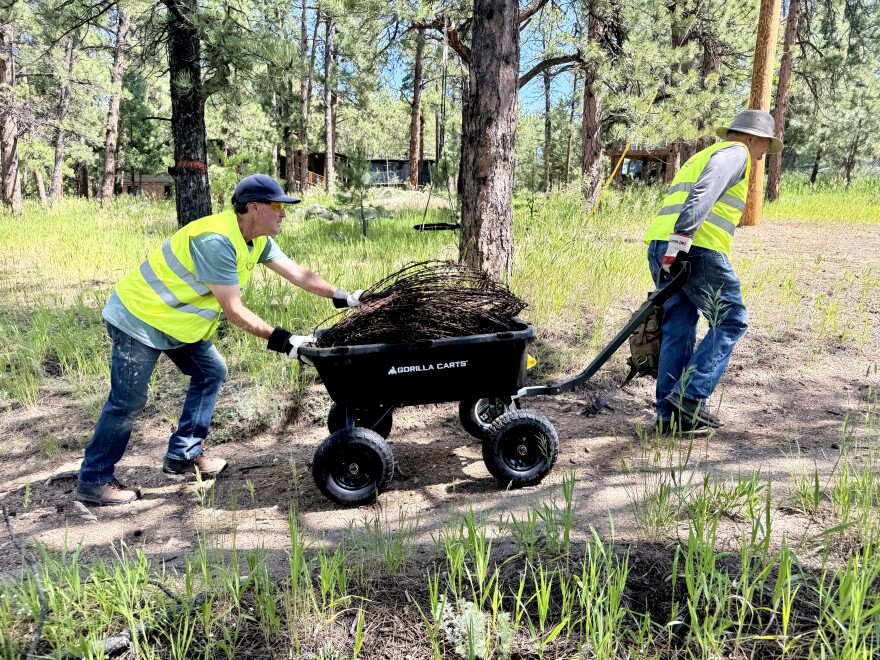
In a list of the most important technologies that have shaped the American West, barbed wire would be near the top. The sharp fencing allows ranchers to control their sheep and cattle herds and divides properties into neat boxes. But it can also harm wildlife.
The Barbed Wire Warriors have taken down about 40 miles of obsolete fences in Colorado. They are part of a growing movement across Western states. Other nonprofits, often working with federal or state agencies, pulled fences in Nevada and New Mexico this year. In Wyoming, volunteers modified a fence to make it more wildlife friendly.
Trapped
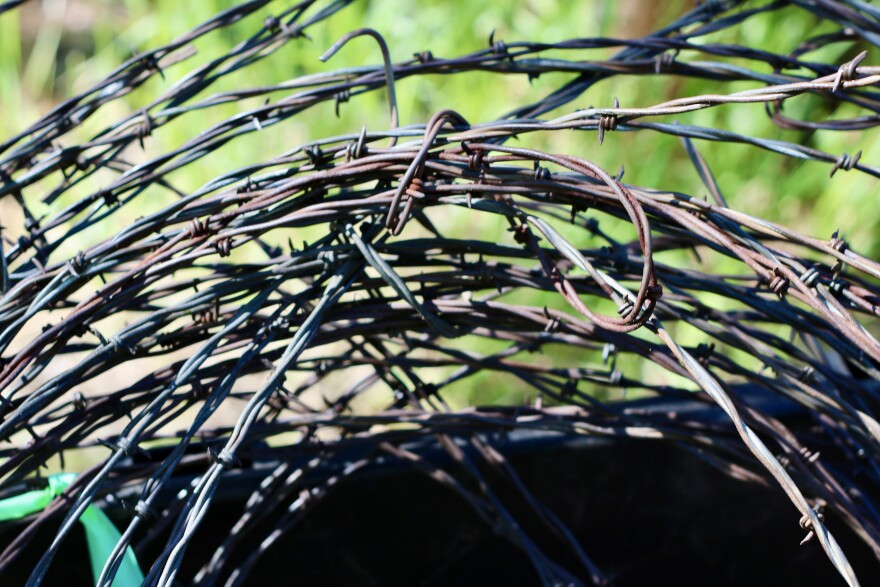
One study estimated that every two and a half miles of wire fencing was responsible for killing one deer, elk or pronghorn a year. The research was conducted two decades ago, but it remains the most-cited evidence of the harms fences pose to wildlife. What happens on these vast and remote swaths of land is not well-tracked.
Michael Conover, a professor at Utah State University, worked on the study. He and a student walked hundreds of miles of fence line in Utah and Colorado.
“We'd sometimes find animals still alive and trapped in a fence, and those were always heart wrenching,” he said. “It's one of these things where the more you struggle, the more tightly you become bound.
They also counted a number of carcasses in close proximity to the fences. Conover said they weren’t able to identify a cause but hypothesized that the fences may have presented an uncrossable barrier to some animals or that they could’ve been used by predators to trap prey.
Brown said removing fences is instantly gratifying. She’s seen elk wander through places the Warriors have worked.
“Each season we just do our part,” she said. “Take what we can.”
A high-tech alternative
Rancher Philip Anderson is also doing his part. Riding a four-by-four, he described his operation on a mix of federal and private land near Walden, Colo., by the Wyoming border.
He is testing out a new technology that could cut out some barbed wire fences on his working ranch: a virtual fence.
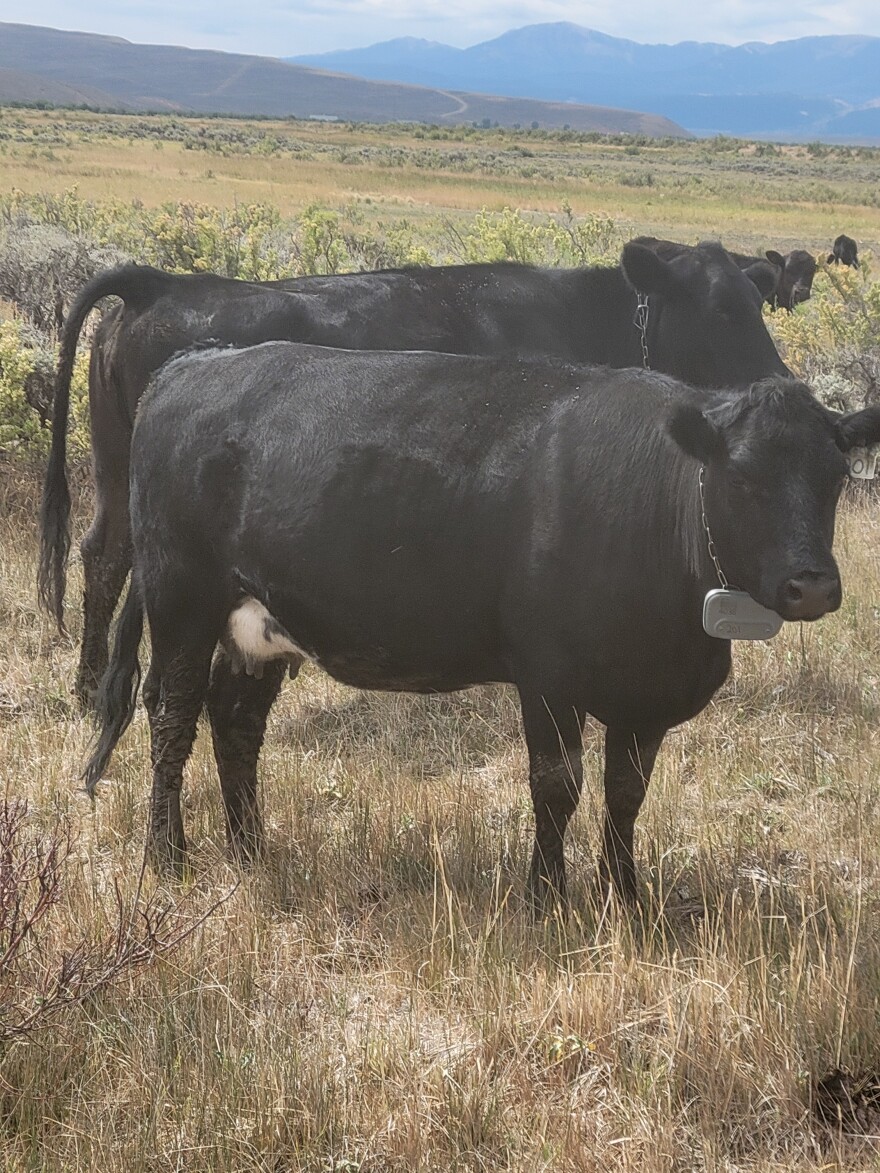
This past spring, he put GPS collars on his cows and then trained them in a few days. On the first day they got a shock if they crossed an invisible fence line.
“The second day that shock is increased a little bit, and the third day it gets a beep before the shock, and the fourth day it’s the whole nine yards,” Anderson said.
The GPS collars communicate with base stations. In a sagebrush field, Anderson pulled out his phone and opened an app. Icons of his cows appeared like in a video game. He could see that they were bunched together in a field a distance away.
“I can be in Laramie and I can see where my cows are. I could be, probably in Chicago, and see where my cows are. That's kind of a neat deal,” he said.
A few months in, Anderson said his cows only went past the virtual fence once.
“Boy, I tell you what, it worked. It worked really good,” he said. “I was so surprised, because I thought, this funny business isn't gonna work. But it did.”
Anderson said these high-tech fences won’t fully replace the wire and wood varieties. The technology is expensive. Plus, federal agencies often require fences on plot boundaries, and he doesn’t want to take the chance of his cows getting onto the road.
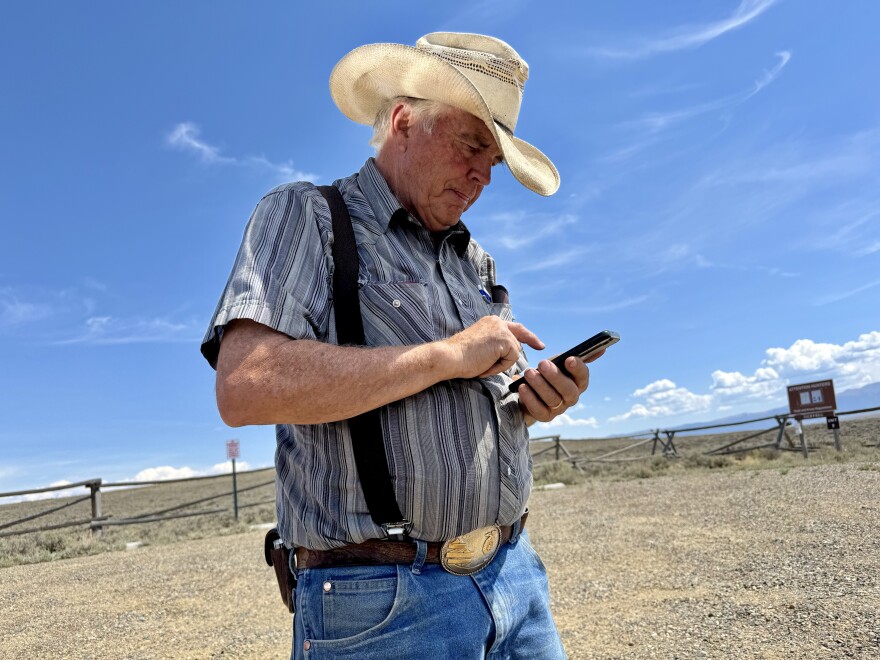
To take down all the fences in the West, would be “a crazy amount,” added Makayla Golden, the habitat stewardship coordinator for Backcountry Hunters and Anglers in Colorado.
So, the nonprofit is targeting places most important for migrating wildlife – like the high elevation sagebrush valley where Anderson’s cows graze.
“You come here in the winter, and you'll see all the critters in Colorado here,” Golden said. She's taking an inventory of fences in the area to see which ones could be removed or altered.
Backcountry Hunters and Anglers is also working with Anderson, the Bureau of Land Management and the U.S. Fish and Wildlife Service on the virtual fence pilot program.
The idea is that maybe ranchers wouldn’t need to put up quite as many wire fences on the inside of grazing areas, allowing wildlife to cross the landscape more freely.
This story was produced by the Mountain West News Bureau, a collaboration between Boise State Public Radio, Wyoming Public Media, Nevada Public Radio, KUNR in Nevada, KUNC in Northern Colorado, KANW in New Mexico, Colorado Public Radio and KJZZ in Arizona as well as NPR, with support from affiliate newsrooms across the region. Funding for the Mountain West News Bureau is provided in part by the Corporation for Public Broadcasting and Eric and Wendy Schmidt.


